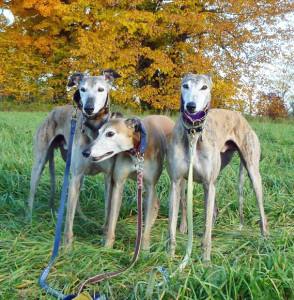Four-Legged Friends: Canine Therapy
By Susan ScheideThe partnership between man and dog goes back nearly as far as man and dog can be traced. Dogs do all kinds of jobs for us, from herding sheep to providing independence to the blind. The service dogs most of us are familiar with are the seeing eye dogs. When I was a kid, they were all German shepherds. Now they are Labradors, golden retrievers, or even a few mixed breeds. Dogs have been trained to work as hearing assistants as well. Of course, most of us know that dogs are also used by the police for everything from sniffing out drugs to finding bodies. Some dogs can detect low blood sugar for diabetics. Some dogs can alert a person to an oncoming seizure. And some dogs can even sniff out cancer before conventional tests can find it. Dogs are truly amazing. What I’d like to write about today are therapy dogs.
What is a therapy dog? In the words of the subject of this column, my friend Nancy Page:
“Unlike a service dog, a therapy dog is a pet trained to interact with many people other than its handler to make those people feel better. Therapy dogs are also trained to behave safely around all sorts of people, and are often certified.
A therapy dog handler is not given public access rights by any service dog laws to take the dog out everywhere like service dog users, because the handler does not have a disability the dog is individually trained to mitigate. Therapy dogs are only allowed into places like hospitals, skilled nursing facilities, and libraries by prior agreement (again, not by service dog laws).”
Nancy Page has been involved with therapy dogs via the Canadian organization St. John Ambulance for many years. Nancy is a pint-sized dynamo who lives in Ontario, Canada. In her 60s, Nancy would run rings around most of us. A devoted wife, mother, and grandmother, she also has two part-time jobs and a farm. Animals she cares for include three greyhounds, two barn cats, a barn bunny, and five ponies. Despite having more than enough on her plate for several people, Nancy and her greyhounds Nixon, Ruby, and Nigel visit nursing homes and schools just to make life a little better for the people they visit. Their school work involves anxious or troubled preteens. Their nursing home visits include patients with dementia and other ailments.
It takes a lot more than an outgoing personality for a dog to make the cut as a therapy dog — at least one with St. John Ambulance. Therapy dogs are faced with unusual and strange situations, equipment, and noises. A dog who is skittish or easily distracted won’t make a good therapy dog primarily because they won’t enjoy the experience.
The therapy dog and his handler (usually also his owner) must complete extensive screening and evaluation to be approved for the St. John program. The dog’s temperament needs to be consistent, reliable, and disciplined around other dogs and people in noisy, crowded, and threatening circumstances. The dog must be certified healthy by his vet and be current on all vaccines. The handler is subjected to a police background check and assessed for suitability as well. Each team that successfully passes screening and training is supervised on a minimum of four visits before being allowed to visit on their own.
A child-friendly certified therapy dog is one who has already passed the general certification, and is only tested with actual children at the supervisor’s discretion. Testing involves a group of eight to 10 children in a large room such as a gymnasium. The children are encouraged to skip and run and play as if they are at recess. The dog and handler walk among them while they are playing. Then the handler and dog stand in the middle of the room while the children play “Ring around the Rosy.” Finally, one at a time the children run across the room straight at the dog and handler and then tumble onto a mat. After all of this, assuming he hasn’t already bolted out of the room, the dog is asked to stand quietly while the children approach him one by one. To simulate a real school environment, a recording of a loud school bell is played. If the dog displays any sign of fear or aggression during all of this, the test is immediately stopped.
Nixon, who has since retired from being a “reading dog” (a dog that young children read aloud to — this helps them to build confidence and to enjoy reading) was Nancy’s first dog to pass the difficult child-friendly test. Nigel has also passed the test.
In 2015, Nancy was admitted as a member to the “Most Venerable Order of the Hospital of St. John of Jerusalem.” Her admittance was sanctioned by the governor general on behalf of the Queen of England. She received a beautiful medal that was made by the queen’s own medal makers.
Therapy dogs may or may not wear a special identifying vest or scarf. A service dog will almost always wear something to identify it. You should never approach any working dog without speaking to its handler first. While they are trained to ignore distraction, it is rude to divert them from their work without permission.
I have several friends who have gotten involved in therapy dog work. Some organizations have arduous testing and certifications, like Nancy’s group, and some do not. It’s a lovely way to give back to your community, if you have the time and your dog has the disposition. Imagine distracting a frightened patient awaiting cancer treatment, or letting a child bury their face in your dog’s fur — perhaps missing their own dog from home. There are other animals used for therapy in some places. Another of my friends, Tin Asme, had a cat who used to be a therapy cat! Thank you Nancy, Tin, Chris, and everyone else I know who does this important work.
Short URL: https://www.thecantoncitizen.com/?p=34888











